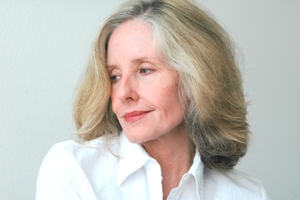New Education about Menopause and Dry Eye
 Laurie Barber, MD, Professor of Ophthalmology at the University of Arkansas, talks with Sharon Kleyne about Dry Eye and Menopause.
Laurie Barber, MD, Professor of Ophthalmology at the University of Arkansas, talks with Sharon Kleyne about Dry Eye and Menopause.
Dr. Barber practices in all areas of ophthalmology but does research on corneal inflammation, which can be caused by dry eye. There is no skin over the cornea and it is protected only by the corneal membrane and the tear film so it’s very delicate. If the tear film is healthy, the eye is likely to be healthy.
According to Dr. Barber, hydration and diet are critical to retain moisture in the eyes. You should also eat green, leafy veggies, fruit and omega-3’s.
In younger people, according to Dr. Barber, there are very few symptoms of dry eye. Dry eye is most common in people over 35. Dry eye symptoms include burning, itching, irritated, red eyes, and blurred vision.
The hormonal changes leading to menopause, she explained, start at around age 35, and while men have some of the same hormonal fluctuations as women, women have more hormones and more dry eye.
Ms. Kleyne asked what women can do to treat menopausal dry eye, and Dr. Barber said to do what you would for hot flashes; Exercise, drink lots of water, try to stay in a cool place and wear layered clothing so you can cool yourself off.
–
Sharon Kleyne is the founder of Bio Logic Aqua Research, the maker of Nature’s Tears EyeMist. Nature’s Tears EyeMist is an all-natural mist for dry eyes.
© Oscarcwilliams | Stock Free Images & Dreamstime Stock Photos